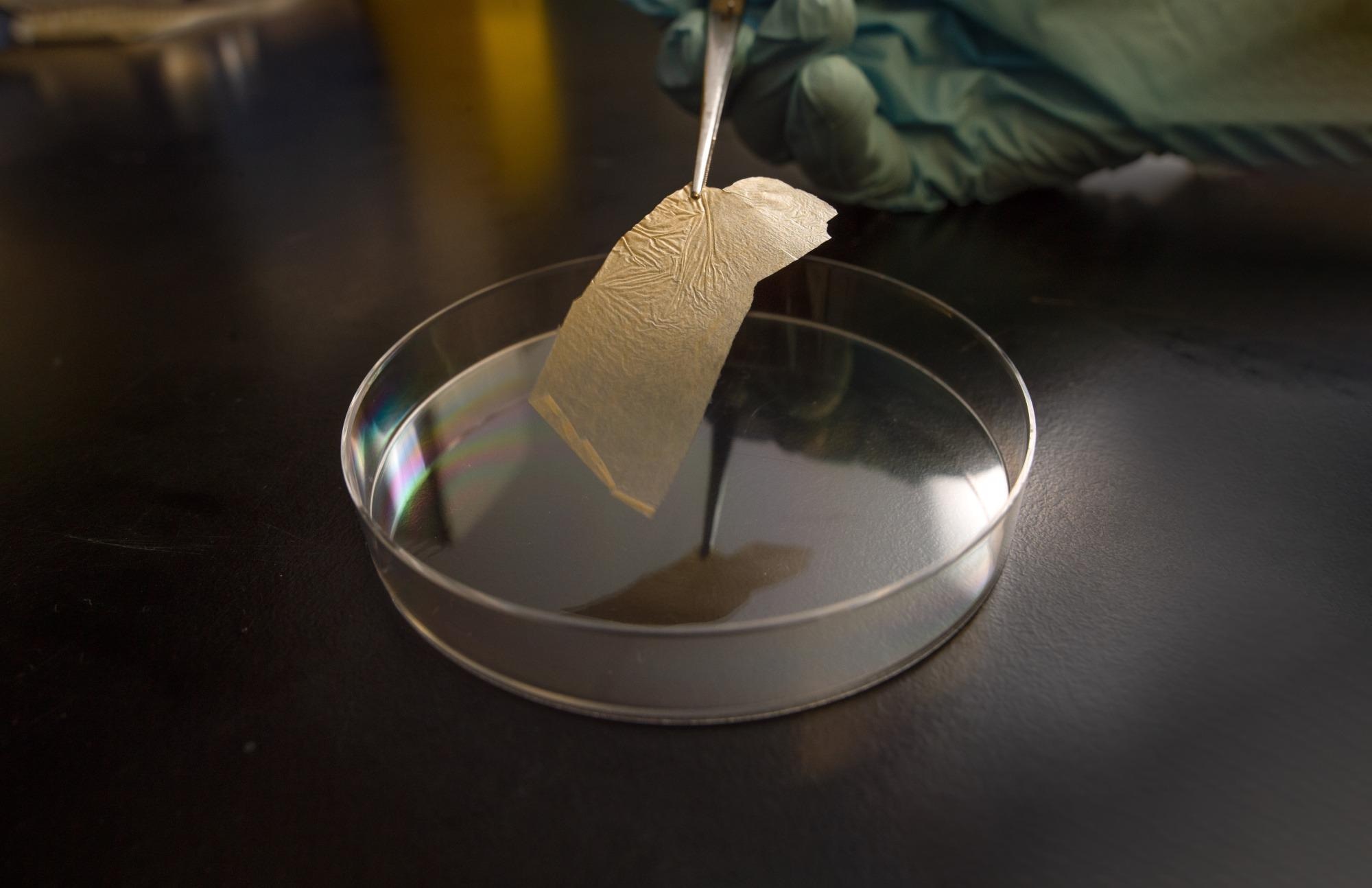The aim of Professor Ziqi Sun was to develop a project to mimic the optical and structural properties of natural objects like fish scales, seashells, and fly eyes, to build a sustainable energy solution. Sun was motivated to execute this project during his walk through the Brisbane City Botanic Gardens.
 The battery-boosting membrane inspired by bamboo. Image Credit: Queensland University of Technology.
The battery-boosting membrane inspired by bamboo. Image Credit: Queensland University of Technology.
Professor Sun and a research team including Queensland University of Technology’s (QUT) Dr Jun Mei, Professor Xiaomin Peng, Dr Qian Zhang, Xiaoqi Zhang, and Associate Professor Ting Liao have collaborated to work on this project. The study was published in the journal Advanced Functional Materials.
The study reveals the method by which the researchers were motivated by the multilayer membrane that lies inside the bamboo stem. Professor Sun commented that the size of the membrane that is as thick as a piece of paper enabled an ultrafast movement of water and nutrition up the bamboo, reportedly growing at a rate of 40 mm per hour.
According to Professor Sun, the membrane is made up of layers, with each one packed very closely together on the side, which is closest to the bamboo’s inner ring, and also more distant from the side nearest the center of the bamboo. The layers also feature porous structures on the surface.
Professor Sun asked, “Why does the bamboo have this membrane?”
It’s not just something for decoration, it must be for some specific function.
Dr Jun Mei, Study First Author, Queensland University of Technology
According to Dr Mei, the special structure and the function of the membrane warrant an in-depth study.
The membrane is the most important component in the energy storage devices, and it would be very exciting if we could find a potential material candidate for energy storages by learning from the relationship between the membrane structure and the specific function.
Dr Jun Mei, Study First Author, Queensland University of Technology
The scientists observed that the multilevel interlayer structure is capable of transporting water and electrolytes in the bamboo using two ways.
The inner layered structure with limited spacing facilitates the “superfluidic” transfer of the electrolytes and liquid. This implies that liquid travels swiftly through the plant. The outer layer has more space between the levels and thus enables fast dispersion of liquid through the structure.
The project is based on a previous work that highlights the advantages of two-dimensional nanomaterials, which are super thin and enable quick movement of ions in a battery.
Nature has taught us how to design with these kinds of two-dimensional materials, and how a multilevel distribution of the space will be much more helpful for high-performance batteries.
Ziqi Sun, Professor, Queensland University of Technology
The researchers created a membrane that is capable of mimicking the structure of the natural version, utilizing the layers of “nanosheets” of graphene and cobalt oxides. These components are separately sized about 100,000 times thinner compared to a strand of human hair.
The researchers simulated the layer structure of the bamboo membrane by using suction on one side of the sheets.
The nearest layers were further organized closer with a distance measuring less than 5 nm between them. Simultaneously, the suction force reduced as the layers were build-up until the layers are arranged together with up to 2200 nm between them. A nanometer is one-billionth of 1 m.
The researchers developed a bioinspired membrane with a diameter of 50 mm, thickness of tens of micrometers (a micrometer is equal to 0.001 mm), and made up of thousands of layers. The membrane was assessed for its potential to transfer ions by placing it into lithium-ion batteries. The membrane was found to exhibit enhanced performance compared to other materials that were generally utilized for electrodes in batteries.
The scientists assessed the wettability of the membrane, which is the potential of the liquid to maintain contact with a solid surface. They also confirmed that the bioinspired membranes exhibited a superwetting behavior toward organic electrolytes. This implies that there was no hindrance for the contact and entry of the electrolyte from the surface into the inner membrane.
Professor Sun concluded, “The study offers a new principle in designing high-performance energy materials. Most importantly, it paves a way for future materials intervention by learning from the greatness of nature.”
Journal Reference:
Mei, J., et al. (2021) Bamboo-Membrane Inspired Multilevel Ultrafast Interlayer Ion Transport for Superior Volumetric Energy Storage. Advanced Functional Materials. doi.org/10.1002/adfm.202100299.